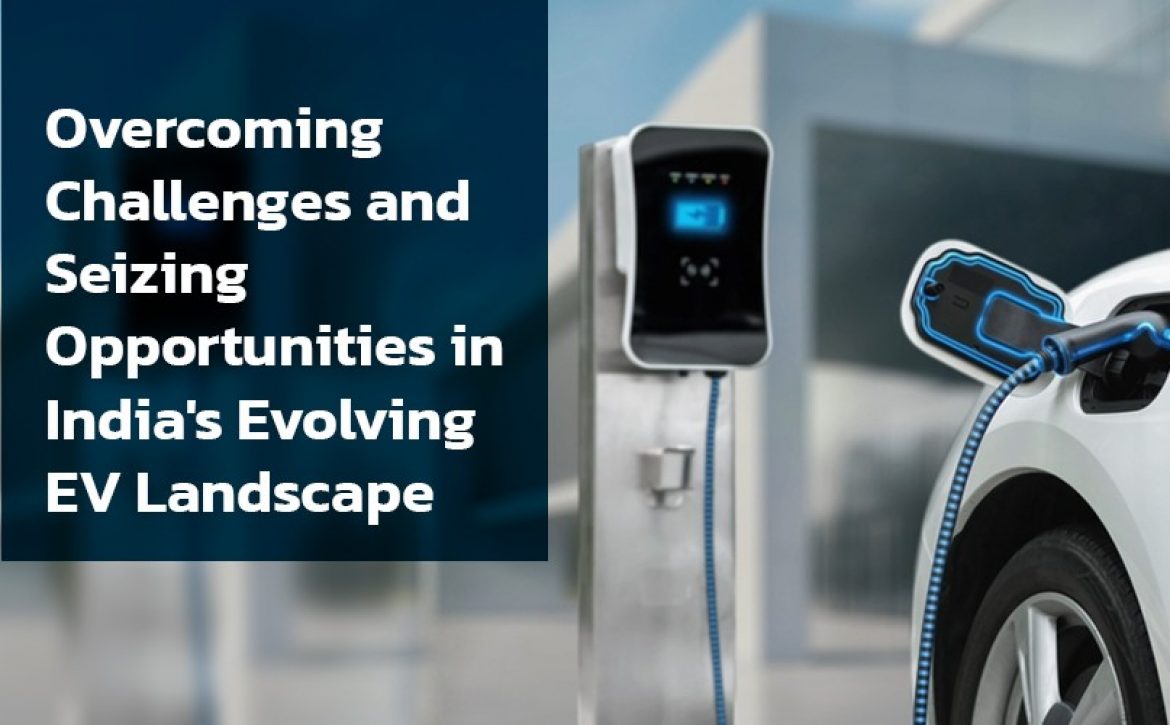Overcoming Challenges and Seizing Opportunities in India’s Evolving EV Landscape
India is experiencing a rapid evolution in its EV charging infrastructure, driven by the incentivization policies of FAME-II. This initiative has not only spurred the development and deployment of electric vehicles but has also catalyzed a surge in local manufacturing units. The FAME-II scheme is actively working to establish EV charging stations, with the government allocating Rs 800 crore to support oil marketing companies in developing charging infrastructure. Small businesses and RWAs are also benefiting from subsidies for infrastructure installation. Meeting the ambitious goal of 30% electrification of automobiles by 2030 requires approximately 46,397 charging stations, and over the next 18 months, the anticipation is for around 7,000 new charging stations. India’s commitment to the global EV30@30 campaign, targeting at least 30% of new vehicle sales being electric by 2030, solidifies its position as a key player in the global electric mobility landscape. The 2023 EV policy further reinforces this commitment through incentives, prioritization of charging infrastructure, and ambitious targets, propelling India’s growth in the EV industry.
Understanding AC and DC EV Charger Installations and Sales Landscape
The surge in demand, especially from the real estate and housing sectors looking to integrate AC chargers, has become prominent. While AC charger installations are usually very easy, consumers occasionally face hardware and software glitches. Infrequent hardware concerns, like voltage fluctuations, can be effectively addressed by employing Servotech’s servo stabilizer. On the software front, occasional issues such as network connectivity or payment transactions are navigated seamlessly through the Servotech EV charging app, ensuring a smooth user experience. When considering sales, the ratio of AC charger sales to DC chargers stands at 60 to 40 percent. AC chargers have a comparative advantage in terms of ease of installation due to their lower power requirements and simpler infrastructure needs. Operating at lower power levels, AC chargers use standard household electricity, making them versatile for installation in various settings, including residential areas, parking lots, and commercial spaces. Their compact design requires less space and involves simpler wiring, resulting in an easier installation process. Conversely, DC chargers present installation challenges due to their higher power requirements and larger infrastructure needs. Operating at higher power levels, they demand specialized electrical setups, often requiring higher voltage connections. Their bulkier design, necessitated by components like transformers and cooling systems, makes finding suitable installation locations challenging, especially in constrained spaces. The intricate wiring and power output complexities mandate skilled professionals for proper installation. Additionally, ensuring compatibility with diverse EV models and adhering to various standards further complicates the installation process. Despite their faster charging benefits, these complexities make DC chargers less accessible and more challenging to install compared to the simpler deployment of AC chargers. The installation cost of chargers varies based on their power capacity. Chargers with higher power capacities incur higher installation expenses. DC chargers, known for their high power capacities and infrastructure needs, tend to be more expensive to install. For example, installing a 60 kW DC charger typically costs around 15-20 Lakhs. On the other hand, AC chargers, being wall-mounted, have lower installation costs. Their installation expenses are generally 10 times cheaper compared to DC chargers, attributed to their lower power capacity and infrastructure requirements. Overall, navigating these intricacies is crucial in ensuring the successful integration of EV charging solutions and fostering the widespread adoption of electric vehicles.
Challenges and Solutions in EV Charging Infrastructure
The primary challenges for EV charging solutions providers center around addressing consumer confusion regarding AC and DC chargers. To overcome this, prioritizing consumer needs, offering customized solutions, embracing technological advancements, fostering collaborations, and ensuring scalability is necessary along with a strategy focusing on innovating for efficiency and collaborating across industries to streamline choices, anticipating market demands, and developing accessible, smart charging solutions that cater to evolving consumer preferences while keeping pace with technological progress in the EV landscape. The complexities of land acquisition for EV charging stations present multifaceted challenges. Beyond the high expenses associated with procuring land, significant investments are required for building necessary infrastructure and ensuring ongoing maintenance for seamless operations. These combined costs contribute significantly to the financial considerations and complexities involved in establishing and sustaining EV charging stations.
Government incentives and policies play a pivotal role in supporting the EV charging solutions provider. Subsidies on electricity for charging make EV adoption more cost-effective for consumers. Mandates in the real estate sector requiring construction sites to integrate EV charging points for residents provide a substantial boost, fostering a more EV-friendly infrastructure and stimulating demand for charging solutions. Additionally, tax credits, rebates for EV charger installations, grants for research and development in the EV sector, and incentives encouraging public-private partnerships to expand charging networks further support the efforts of EV charging solutions providers. Policies mandating EV infrastructure integration in new construction projects or offering incentives for businesses to install charging stations collectively contribute to creating a more conducive environment for the widespread adoption of electric vehicles, facilitating the advancement in sustainable transportation.
Conclusion
India’s dynamic EV landscape is witnessing a remarkable transformation driven by supportive government policies, substantial investments, and a surge in local manufacturing. This shift towards electric vehicles reflects a collective commitment to sustainability, with initiatives like the FAME-II policy incentivizing the development of electric vehicles and charging infrastructure. The nation’s steadfast dedication to the EV30@30 campaign positions it as a key global player, aiming for at least 30% of new vehicle sales to be electric by 2030. As the industry gears up to meet this ambitious goal, the anticipated installation of thousands of new charging stations and the continuous innovation in charging solutions underscore the rapid evolution of India’s electric mobility ecosystem. The journey ahead involves navigating challenges, embracing opportunities, and collectively contributing to a cleaner, more sustainable future for the nation’s transportation sector.

